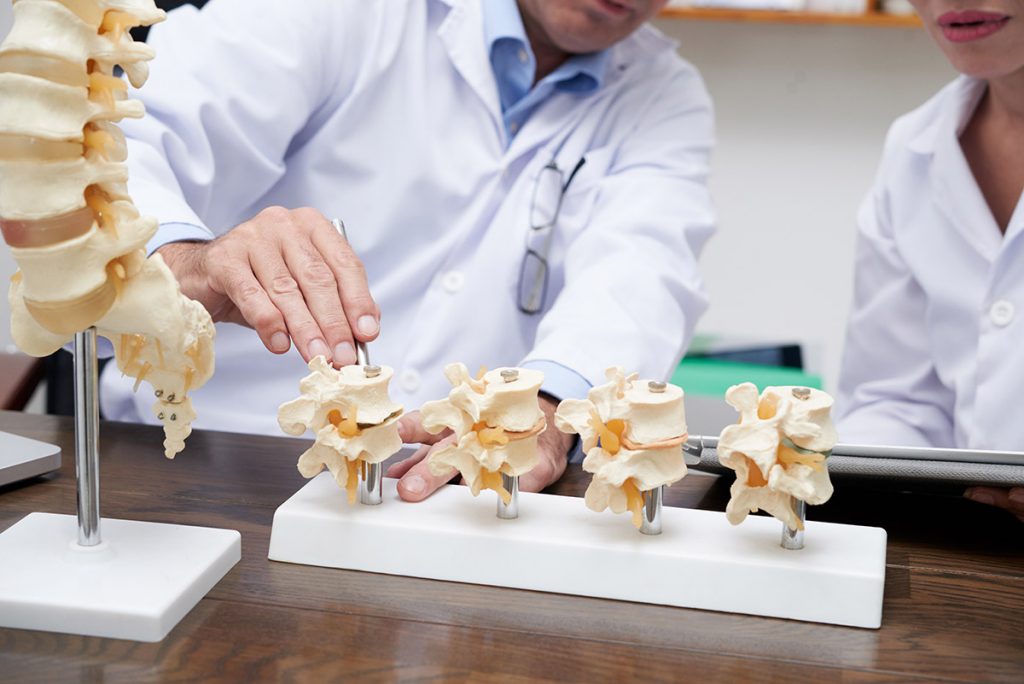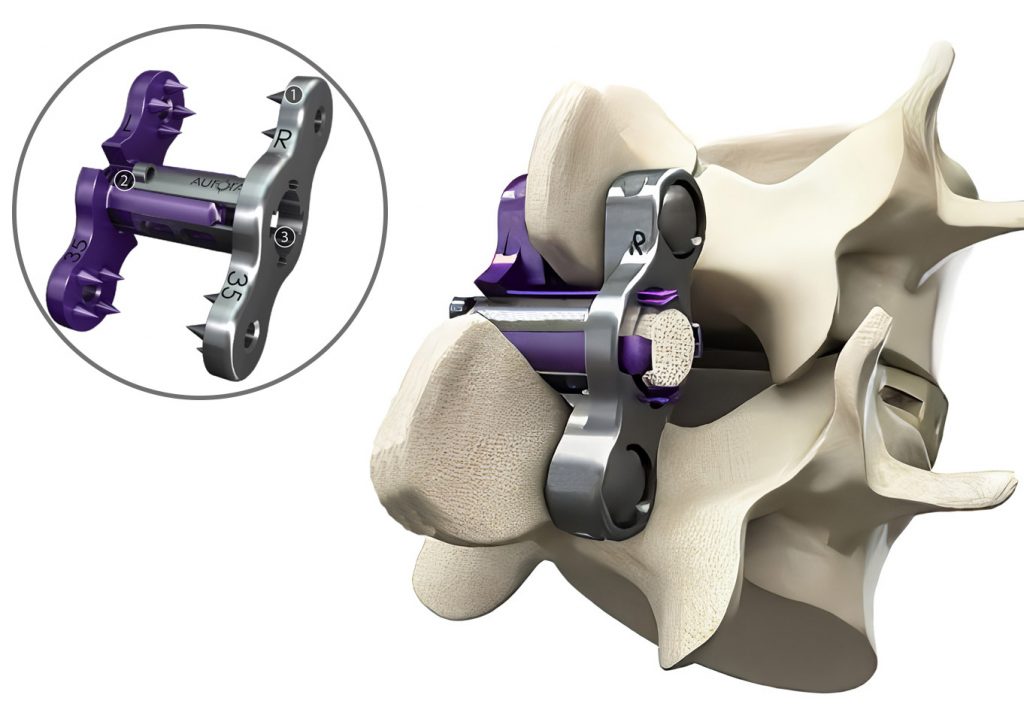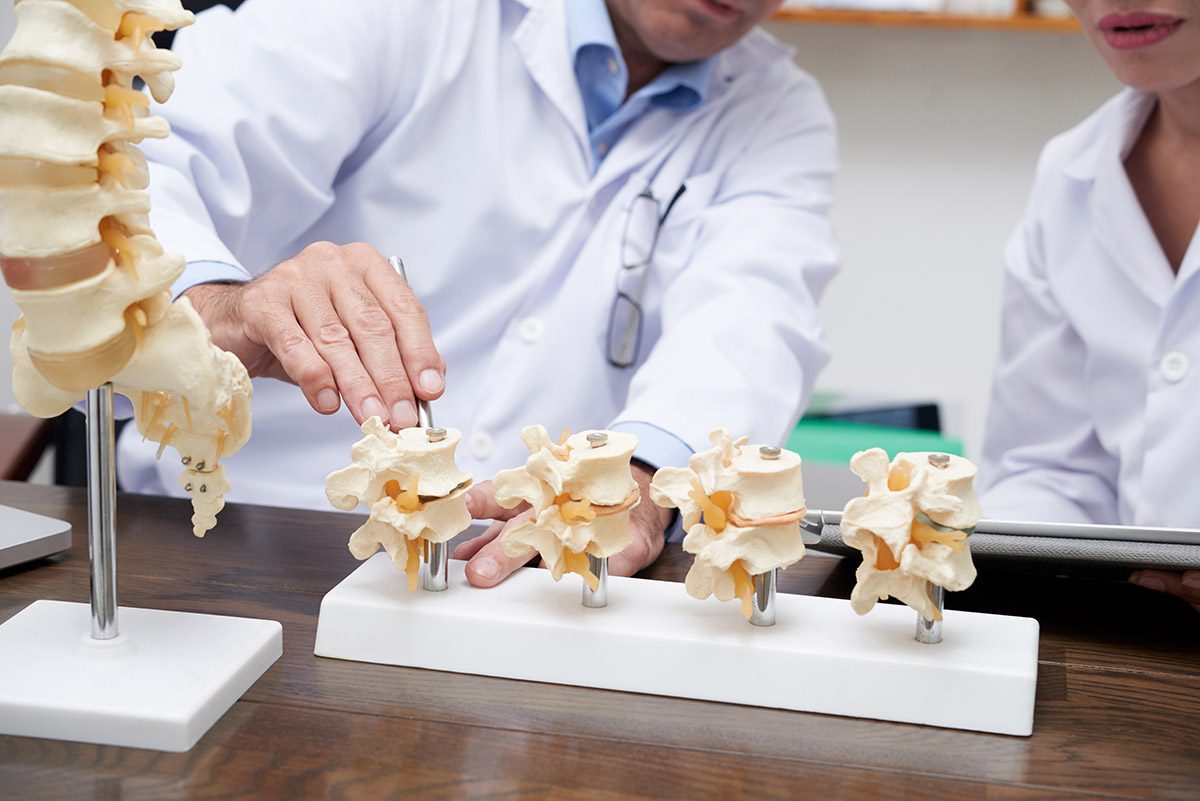![]()
Call (703) 520-1031 or use the form to send us your contacts.

Spinal instability is common for many reasons. One is the normal aging process in which spinal discs become dehydrated and less able to absorb shock. Other contributing factors include injury, degenerative disc disease, lumbar spinal stenosis, herniated discs, bulging discs and vertebral compression fractures. Spinal instability usually leads to back pain, so stabilizing the spine becomes important to restoring the quality of life. Zip surgery is an alternative to major back surgery for spinal stabilization.
What is the ZIP Procedure?
The Zip procedure is a minimally invasive spinal fusion surgery. The procedure utilizes Aurora Spine’s interlaminar fixation implant as a back fusion treatment. A fusion is a spine reinforcement.
The implant is designed to stabilize the spine and provides load sharing in the T1-SI thoracolumbar spine. This is the transitional zone between the thoracic cage, which is stiff, and the lumbar spine, which is mobile. This area of the spine is subject to high stress which can lead to disc deterioration over time. In addition, aging leads to normal wear-and-tear which may be aggravated or accelerated by other events like injury or trauma.

The lumbar spinal fusion using the Zip procedure can replace a deteriorating disc, relieve pressure on the spinal cord and nerves and realign two vertebrae. It is a possible option for avoiding invasive and extensive surgery.
What Happens During the ZIP Spine Procedure?
During the Zip spine procedure, a specially designed adjustable metal implant is placed between the flat part of the vertebra. Lamina refers to the flattened part of the vertebra on either side of the arch. So interlaminar means between the flattened vertebra parts.
- A small incision is made in the correct area of the spine.
- A section of the targeted ligament is removed where the implant will be inserted.
- Facet capsule material (fibrous connective tissue) is removed.
- A sizer is used to measure the space where the implant needs to fit.
- The implant is placed in a grafting station and filled with the appropriate volume of bone graft.
- Using an all-in-one inserter and compressor, the implant is fitted into the space to stabilize the spine and locked down.
- Incision is closed.
One of the advantages of this minimally invasive spinal fusion surgery is that it can be done on an outpatient basis. Most procedures are done with the patient under IV sedation and not general anesthesia. There is very little blood loss too.
Long Term Effects and Benefits of ZIP Procedure
The Zip procedure delivers long-term pain relief that can last for months or years. A lot depends on the patient’s spinal condition as to how long the pain is relieved. Spinal instability can lead to a variety of symptoms the Zip procedure may relieve.
- Low back pain
- Spinal stiffness
- Weakness in the legs
- Radicular pain that radiates from the spine and into the buttocks and legs
- Tingling in the legs
- Severe back pain when lifting items that requires bending and straightening back up
- Muscle spasms
- Numbness in the lower extremities
Other benefits include the ability to enjoy some activities again that were avoided because of back pain. Feeling little or no pain after a long period of moderate to severe pain is a mental as well as physical relief.
The procedure is done once in a specific area of the spine, but it can be done in more than one location. There is minimal scarring and pain because the incision is small. Patients may recover within one week after the procedure.
Candidates for ZIP Fusion
The Zip for spine and pain is used for treating spinal conditions that cause spine instability and pain.
- Degenerative spinal disease – deterioration of one or more spinal discs
- Lumbar radiculopathy – pressure on the lumbar spinal nerves that leads to leg pain, numbness and weakness
- Spinal stenosis – narrowing of the spinal column that leads to pressure on the spinal cord and nerves
- Spondylolisthesis – two backbones shift and pinch a spinal nerve and may also lead to lumbar radiculopathy
- Trauma – injury to the spine
- Tumor on the spine
People with chronic back pain and a loss of function in one or more intervertebral discs are candidates for the Zip procedure. The spinal instability should be mild-to-moderate.
High Rate of Success
There is a high rate of success for a lumbar fusion using the Zip procedure. If the spine experiences continued degeneration, the next and last option is invasive surgery.
